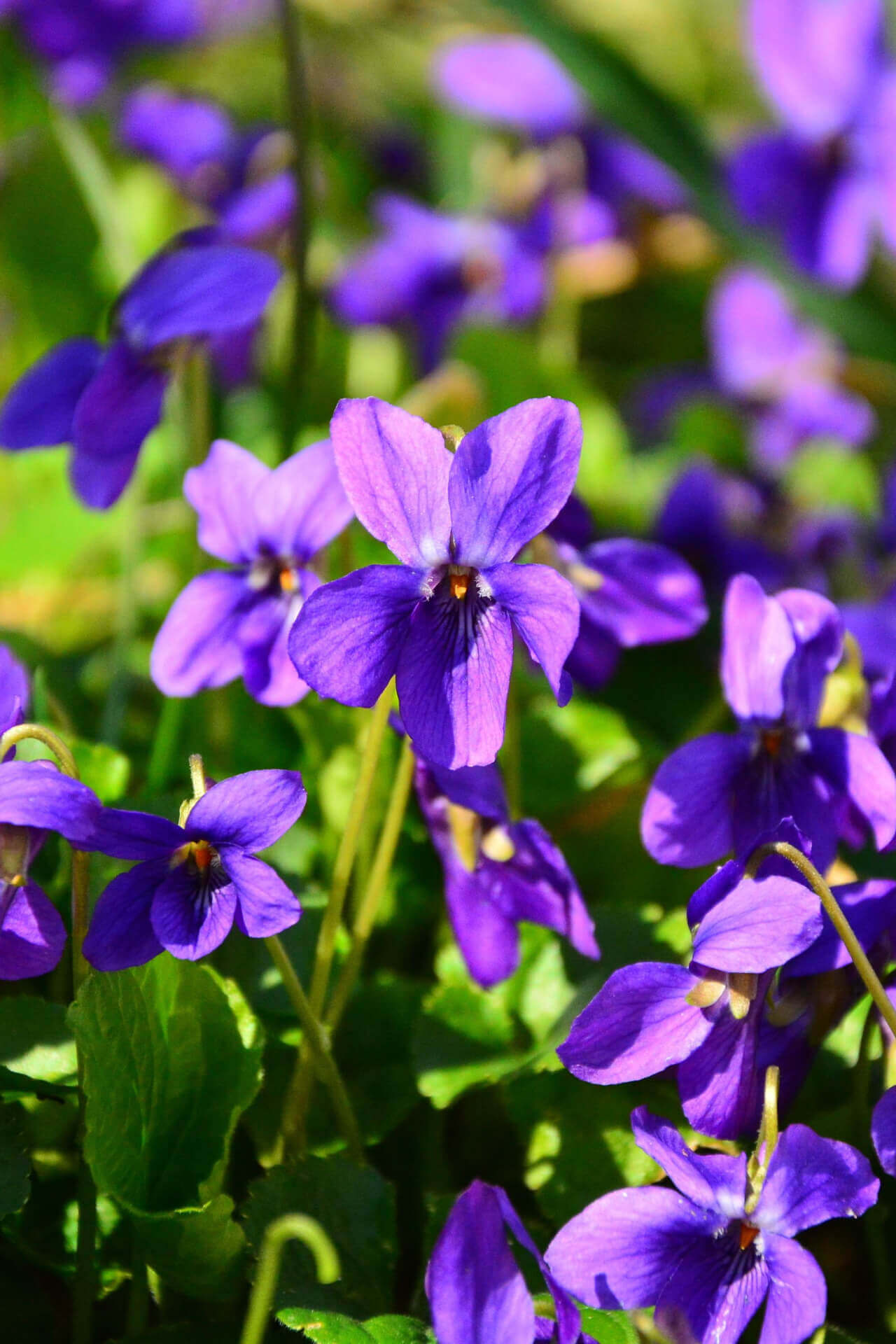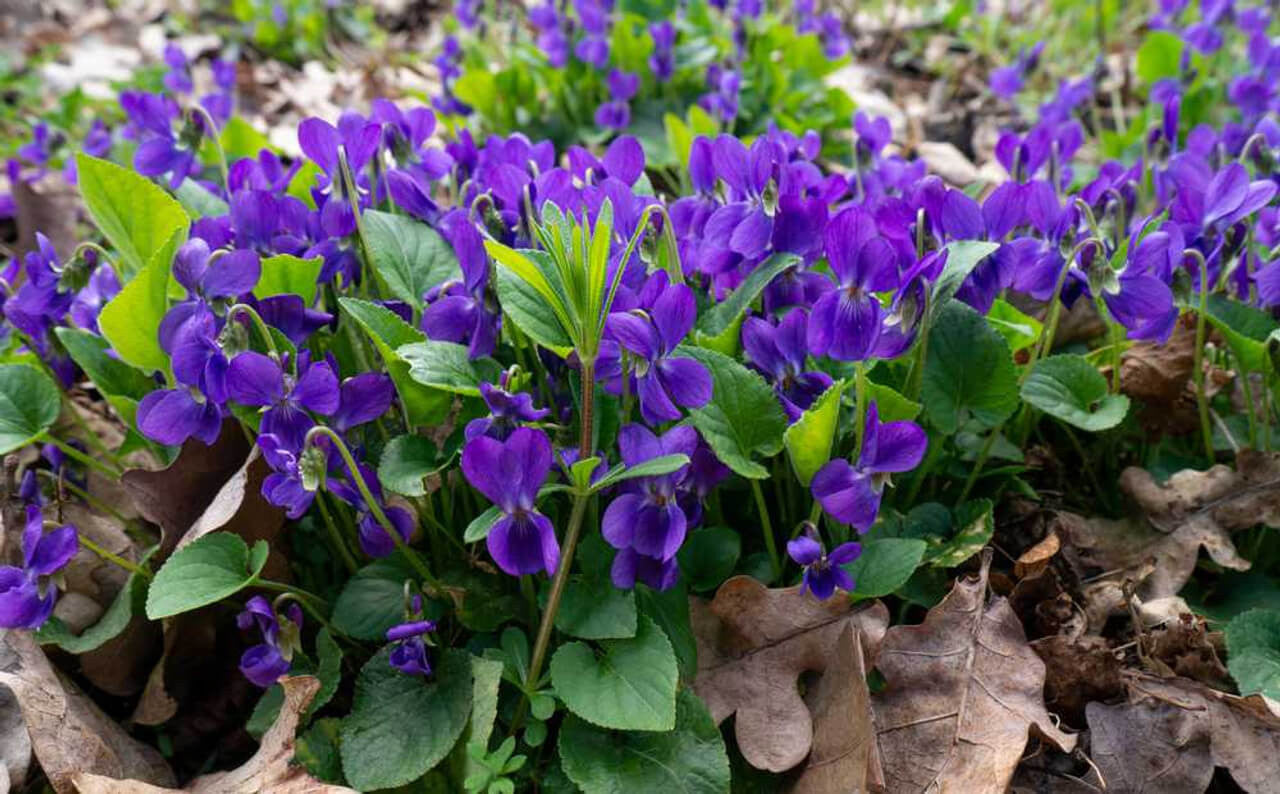Sweet Violet For Sale
Sweet Violet perennial is the perfect carpet plant, with hundreds of deep purple flowers adorning the groundcover. It's pleasing to the eye with its purple flowers and dark green heart-shaped leaves. As harbingers of spring, these plants quickly emerge from the earth and bloom in the early spring months.
This plant adds a lovely, charming touch to your cottage garden, rock garden, meadow garden, or even as an accent for your yard. When planted through grass, purple violet flowers appear like small purple dots studded throughout the landscape. Perfect in the shady border. For a modern take on this classic beauty, add it to raised areas of your garden that are at eye level or into a container for a truly pleasing display.
Sweet Violets are herbaceous perennials with vivid purple flowers.
Sweet Violet Plant Details
Family: Violaceae
Light Requirement: Full to Partial Shade
Water Needs: Moist
Height: 4 – 6 in.
Spread: 4 – 6 in.
Growth Rate: Fast
Bloom Time: Spring
Flower Color: Purple
Wildlife Value: Attracts bees and butterflies
Landscape Uses and Maintenance
This plant will naturalize in the garden given the correct conditions. They grow very low to the ground and create an enticingly “sweet” groundcover you will enjoy year after year.
Plant it in an area with plenty of moist and well-draining soil. It thrives in full to partial shade. Pair it with Virginia bluebells, ferns, Bloodroot, and Dutchman’s Breeches for a beautiful and perennial spring display. Keep it moist and water when conditions are dry, especially in drought.
Sweet Violet can spread via underground rhizomes and by seed. Hop on by? Though uncommon, rabbits will eat violets without their preferred food sources, so watch out for these cute but hungry critters in your garden. However, this plant is deer-resistant.
This plant will attract bees, moths, and butterflies to your garden. It attracts Fritillaries in particular.
Noteworthy Characteristics
Sweet Violet flowers are sweetly scented, and they were once often pressed for perfume extraction or placed in sachets worn at the hip. They are a beloved plant and are the state flower for a few states, including New Jersey.
Exposure
Sweet Violet thrives in partial to full shade, making it ideal for woodland gardens or shaded areas of your landscape. It can endure some morning sun, but too much natural sunlight can cause the leaves to scorch.
Height at Maturity
Under 12"
Usage
Groundcover
Shipped As
Bare-root
Ships
USPS
Planting Zones
4-9




